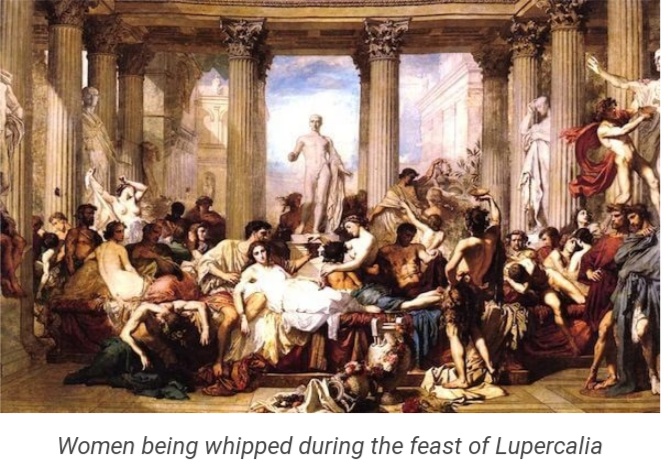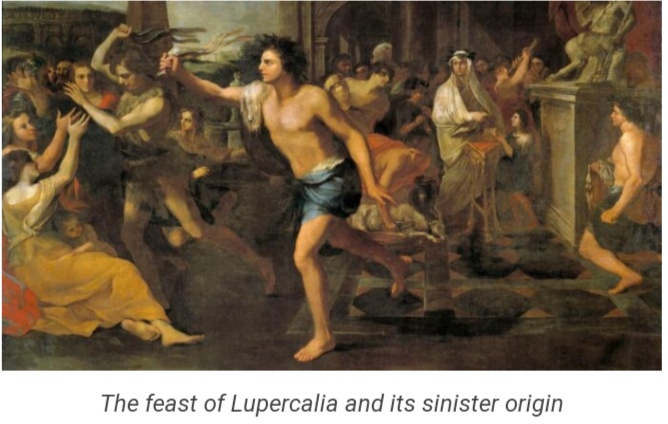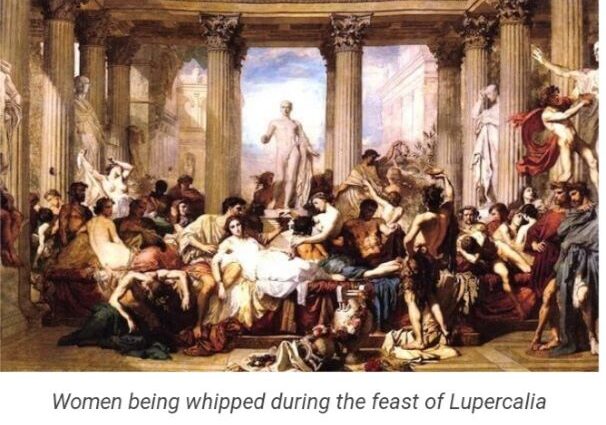Just as the month of February approaches adolescents of this brainwashed republic start planning to rejoice propagated scenery of the materialistic fantasy called Valentine’s Day being unmindful of its genuine grim & malign history. In a race of this self-centric aping of occidental worldview, they invest their useful time, hard-earned money & shower their prominent attention on shallow skin-deep relationships. This idiosyncrasy results in cases of eve-teasing, Romeo-molestation, and many times translates into serious more violent crimes like Acid attacks.
THE STRATAGEM OF MARKETING
The week is celebrated by spending thousands of rupees on products that symbolize love, who knows their ephemeral love could end the next day? Each year companies push forward the agenda to promote Valentine’s Day so that they can earn millions. To be completely honest, there is no emotion involved, just pure financial one-manship. Sanātanīs need to understand why we shouldn’t fall prey to the advertising stunts perpetrated by the west to fuel their own nefarious covert agendas.
RIGIDITY OF FESTIVAL DATES
The Abrahamic system has imposed a timeline on festivals because they believe that time has a finite value, while in the Sanatan Dharma, time is ever-changing, cyclical and multi-existent, spanning many realms. Sanātanīs see time as progressing in a spiral. In Hinduism, time is not seen as solely linear. Instead, time is seen as having both linear and cyclical elements.
DARK HISTORY BEHIND THE ALL-ROSY PICTURE
The story takes place during the Roman Empire, when the Roman men celebrated Lupercalia (the Festival of reproduction) from February 13th to 15th. Men during the festival sacrificed a goat and a dog each, but they followed an incredibly disgusting practice by whipping women with the hides of the animals they had just killed. Noel Lenski, a historian at the University of Colorado at Boulder quoted the following, “The Roman romantics “were drunk. They were naked.” This absurdity would not end here; rather young women would line up to be beaten up by men. It was believed that this would make them fertile. The question is whether they did it voluntarily or forcefully, but either way, it was shameful and reflects a deeply misogynistic society.

To get rid of the pagan customs, Pope Gelasius I later confused matters by mixing St. Valentine’s Day and Lupercalia in the fifth century. Pope Galasis-I connected the date of 14th February with Valentine in order to destroy Roman idol worshipping and Christianize their culture further, by instituting the tradition of celebrating ‘Valentine‘s Day’ and not letting this blot of a festival destroy the so-called peaceful image carved by the Christians. Until the Fourteenth century, there was no connection between ‘Valentine‘s Day’ and ‘Love’. The festival, though, was more of a dramatic recreation of its former self. Lenski continued, “The Christians gave it new garments, but it was still more of a drunken party. It was nevertheless a day of fecundity and love despite that.”

During the time of Claudius-2, Rome’s king in the second century, he wanted the youth to join the army, and in order to do so, he ordered them not to marry, as he believed that getting involved in acts of love and marriage would distract them from their duty. This decision did not sit well with his people, one of whom was a Saint called ‘ Saint Valentine ’. Upon instigating the youth to rebel against the king, the king ordered the saint to be imprisoned and hanged. Lo and behold, this is where the story gets interesting, i.e. a saint who renounced worldly pleasures while accepting sainthood fell in love with the jailer’s daughter.
As the years went on, the holiday grew sweeter. Chaucer and Shakespeare romanticized it in their work, and it gained popularity throughout Britain and the rest of Europe. Handmade paper cards became the tokens du jour in the Middle Ages.
In 1969, the Catholic Church revised its calendar, removing nearly 100 celebrations of saints whose historical origins were questionable—St. Valentine was one such saint.
ORGANISATIONS PROMOTING AWARENESS
Hindu organizations like Vishwa Hindu Parishad, Bajrang Dal, Akhil Bharatiya Vidyarthi Parishad, Sri Ram Sena, Hindu Munnani, Hindu Makkal Katchi, Hindu Janjagruti Samiti concerned about Bhārat’s traditions and culture, have been trying extensively to educate youth about this alien norm.
COUNTER PROTESTS THAT AMPLIFY CELEBRATION
In January 2009 a group called “Consortium of Pub-going, Loose and Forward Women” was formed on Facebook and it asked people to mail pink underwear to Pramod Muthalik of Shri Ram Sena. This obnoxious promiscuity-promoting vulgar move was named Pink Chaddi Campaign.
In Tamil Nadu, Dravidar Viduthalai Kazhagam, Thanthai Periyar Dravidar Kazhagam and the Democratic Youth Federation of India support Valentine’s Day.
On 14th February 2015, several politically motivated students of Jawaharlal Nehru University and Delhi University protested on the Mandir Marg, New Delhi, near the Hindu Mahasabha office. Many were dressed in wedding dresses and they were accompanied by a wedding band. About 220 of them were arrested by the police when they started marching towards the Hindu Mahasabha office, as they had not taken permission for the protest. Wonder if they would dare to protest in front of Jamaat Ulema e Hind or Jamaat e Islami or Deoband seminary the same way?
COW HUG DAY: AN INITIATIVE BY ANIMAL WELFARE ASSOCIATION
The Animal Welfare Board of India announced that from 2023 onwards, February 14th will be celebrated as “Cow Hug Day” saying that “All cow lovers may celebrate February 14 as Cow Hug Day keeping in mind the importance of mother cow and make life happy and full of positive energy”. The notice also said hugging cows will bring “emotional richness” and increase “individual and collective happiness”. This notice of urging people to observe the day as “Cow Hug Day” was later withdrawn by the Animal Welfare Board under pressure from a vicious campaign against the Board’s order by western media and Indian leftist media.
INDIC PREMAM: NOT THE TYPICAL WESTERN ROMANCE
We think of love stories as those that end happily ever after. But thousands of years ago, in ancient India, love was understood in a different way – as one of the four aims of life, as a means for spiritual growth, and as a celebration of the play of the Divine. As something profound, beautiful, and sometimes elusive.
The sacred texts of Hinduism are populated with astonishing stories of love between Gods and Goddesses, between mortals and celestial beings, between sages and saints and ordinary humans. Not just ancient lore, these iconic stories have come to define one of the oldest continuous living civilizations and cultures in the world.
The tales of Maharana Pratap & Ajabde Punwar, Chandra & Rohini, Savitri Satyavān, Kannagi, Chitrangada & Arjun, Samvarana and Tapati, Nala & Damayanti, Pingala, Kāmdev & Rati, Pururava & Urvashī, Varaprada & Agastya Rishi & many such stories account love perfectly woven with other moral complications. Abhijnanshākuntalam, Mālvikāgnimitram & Vikramorvashiyam written by Kālidasa are three texts that belong to the genre of ancient Prema dramas.
It is high time the youth of this progressive nation understood that events like Valentine’s Day are nothing more but a cultural disruptor designed to pull us further away from our Dharmic roots and value systems. Besides destroying our ancient cultural practices and belief systems, this causes a fall in morality in our society, which we can see today as a result.
SOURCES :
1. Time in Hinduism : Hindu American Foundation
2. Hindu Love Stories : Dharmically ever after – by Aditi Banerjee Malakar jī
3. sanatan.org
![]()
- BHĀRAT: EVOLUTION OF A DYNAMIC & DIVINE RĀSHTRA - September 12, 2023
- ECHOES OF INDIC FACETS EMBEDDED IN JAPANESE CULTURE - July 7, 2023
- YOGINIS: SACRED FEMININE DIVINITY & ENLIGHTENMENT - May 25, 2023

